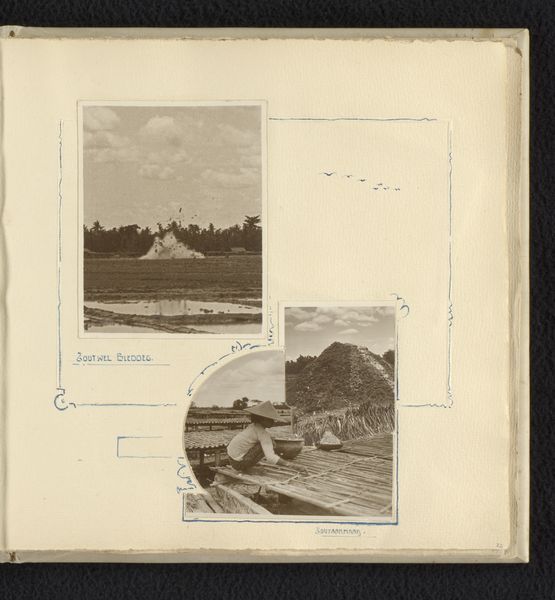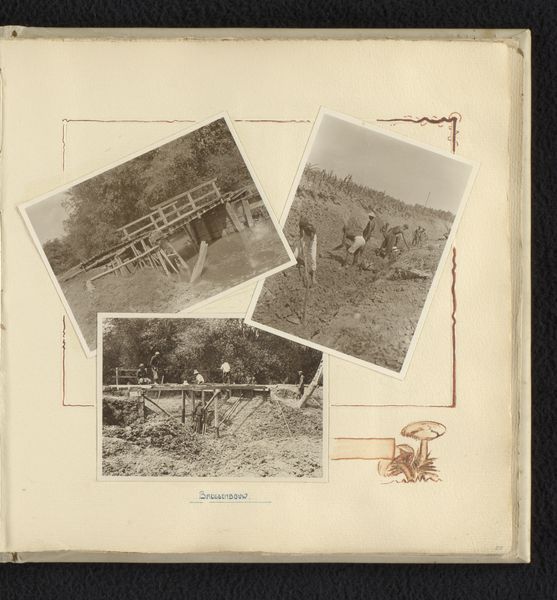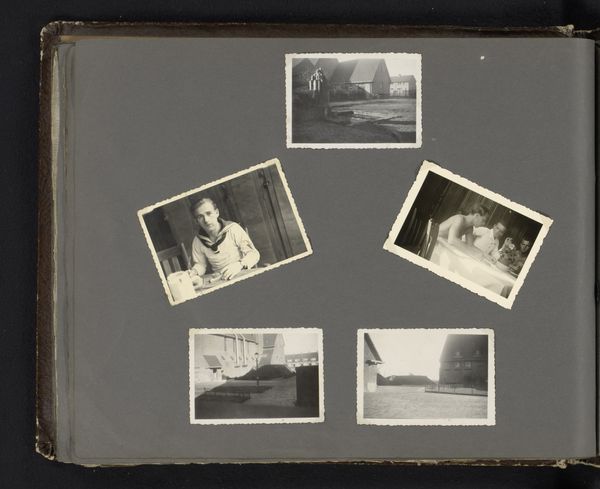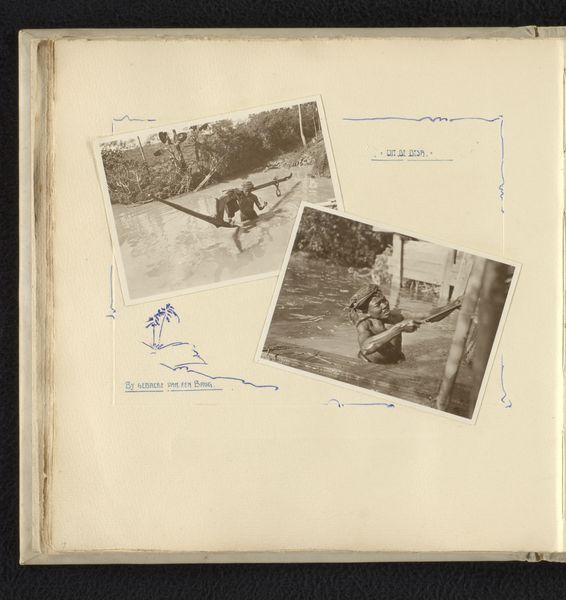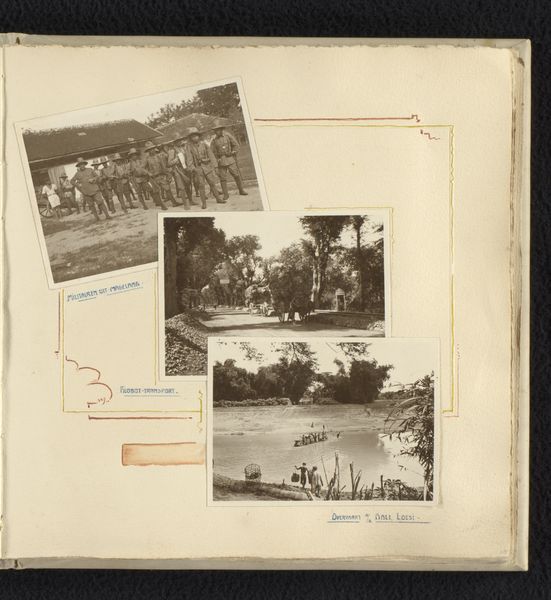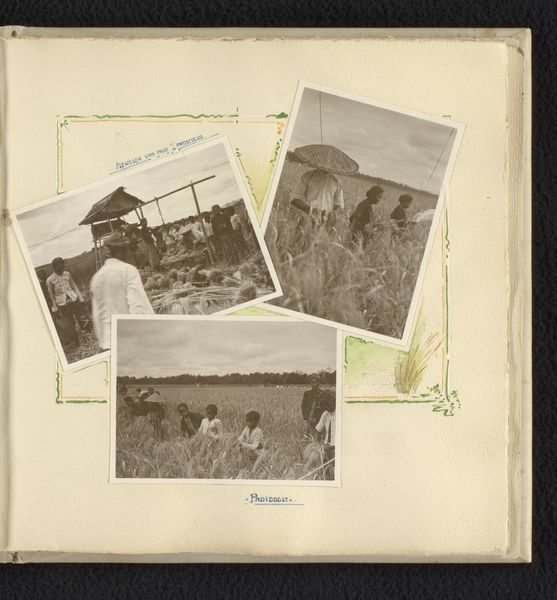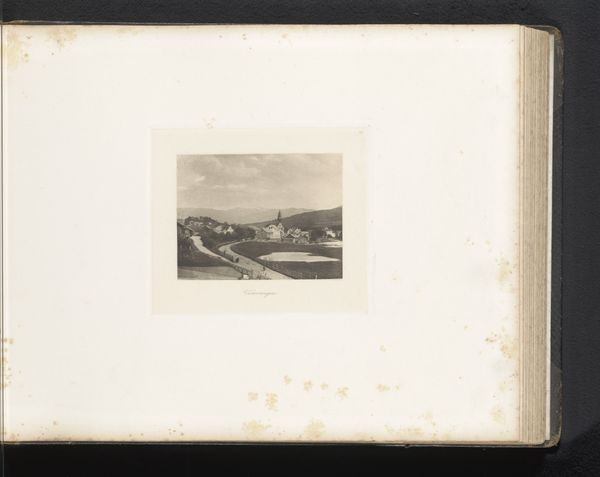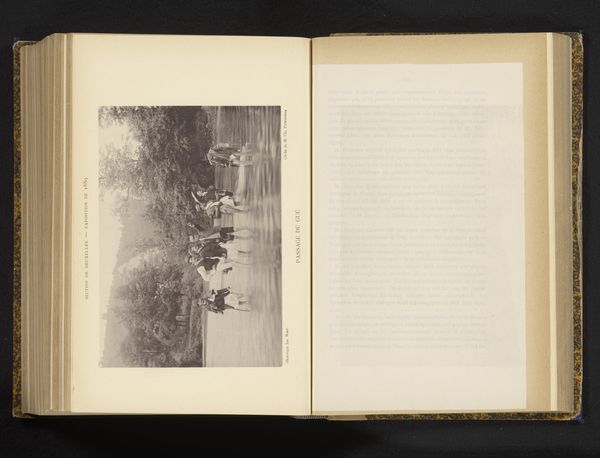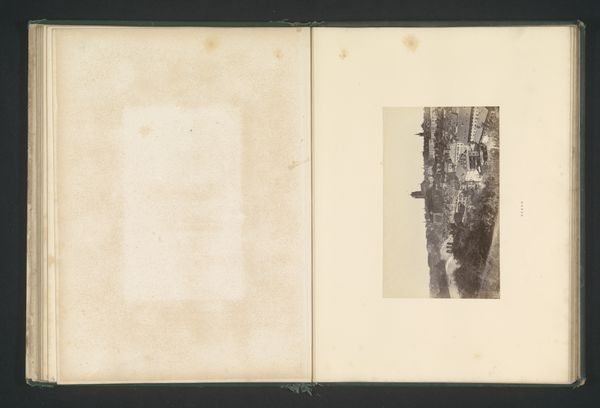
photography, albumen-print
#
portrait
#
landscape
#
indigenism
#
photography
#
orientalism
#
albumen-print
#
realism
Dimensions: height 240 mm, width 240 mm
Copyright: Rijks Museum: Open Domain
Editor: Here we have an albumen print titled "Veeteelt en visserij in Grobogan," which translates to "Cattle Breeding and Fishing in Grobogan." It was taken sometime between 1910 and 1928. The presentation is quite interesting, it looks like two separate photographs carefully arranged on a page. What catches your eye when you look at it? Curator: It's fascinating how these seemingly straightforward ethnographic images from the Dutch East Indies operate within a larger colonial gaze. They present a curated view of local life, emphasizing labor and resources, essentially framing the landscape and its people as commodities for extraction. What kind of a relationship do you think exists between these images, the act of documentation, and the power structures of the time? Editor: It's interesting you mention power structures. So the way the photographs are composed could reinforce a specific narrative? Curator: Absolutely. Consider the "landscape" aspect, particularly. It's not simply a neutral backdrop but a site of colonial interest. By capturing and categorizing the land and its uses – cattle breeding, fishing – the colonizers were also asserting their claim and control. These aren't just images; they are tools of knowledge and instruments of governance. What do you notice about the absence of indigenous perspective? Editor: I see your point. The subjects appear passive, almost like specimens. It feels exploitative, capturing a specific angle and perhaps even overlooking other important facets of Indonesian culture. Curator: Precisely! The power dynamics are subtle but pervasive. By controlling the narrative, colonizers justified their presence and their actions. Considering the active and often violent resistance to Dutch rule, what isn’t shown in these images becomes as significant as what is. Editor: This gives me a lot to consider. It is fascinating to consider art through an intersectional lens. Curator: It truly provides a nuanced approach for understanding it.
Comments
No comments
Be the first to comment and join the conversation on the ultimate creative platform.

